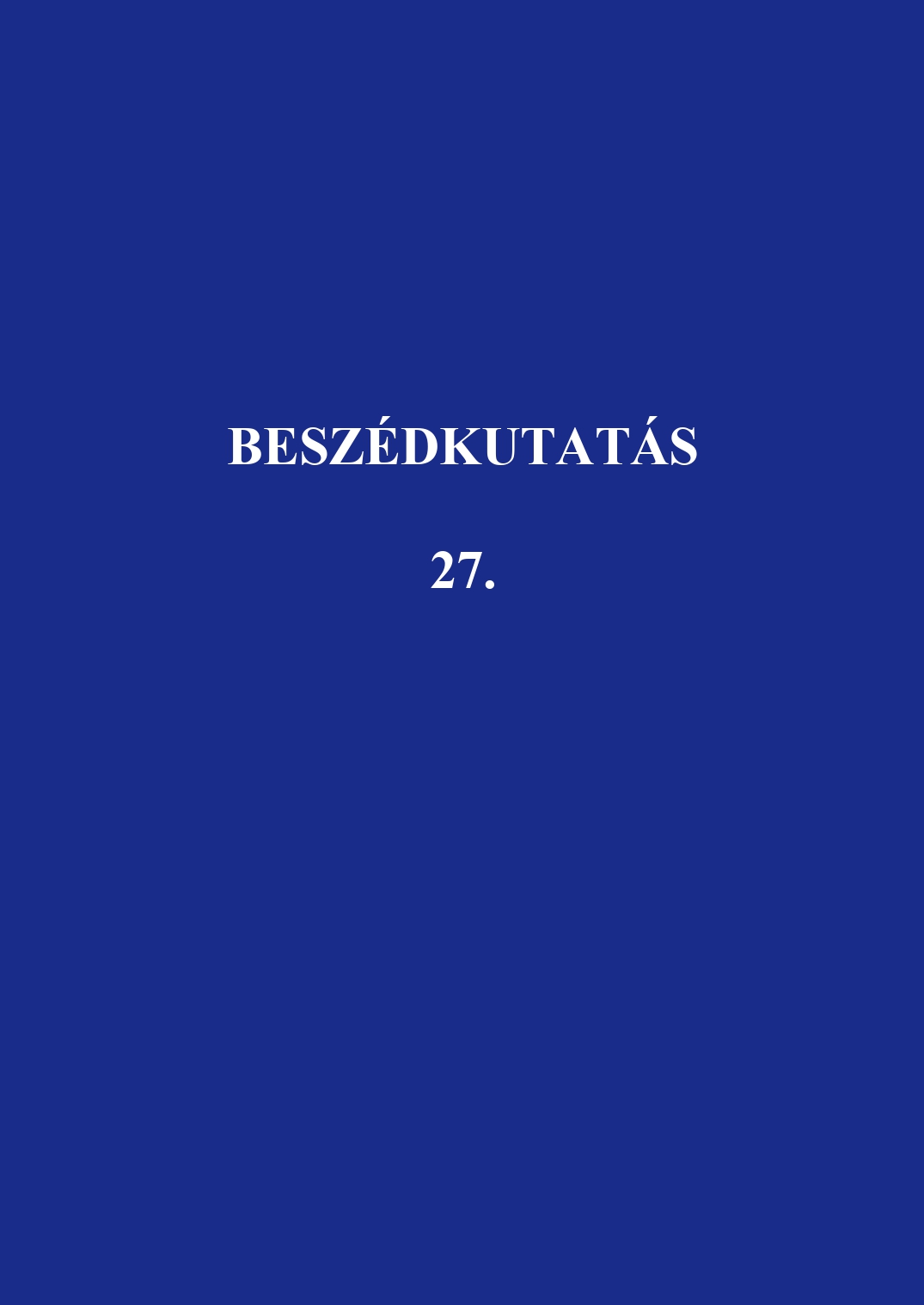Megnyilatkozáskezdő magánhangzók glottális jelöltsége a szintaktikai pozíció és a magánhangzó-minőség függvényében
Absztrakt
Glottal marking of utterance-initial vowels as a function of the syntactic position and the vowel quality
In the present study, the glottal marking of utterance-initially appearing vowels was analysed with respect to the syntactic position, the vowel quality, the formal characteristics of the glottal marking (glottal stop, glottalization, and their combination), and the inter-speaker variability.
Four members of the Hungarian vowel-inventory were chosen for the analysis: front and high /i/, back and high /u/, front and low /ɛ/ and back and low /ɒ/ (in these examples the feature backness co-varies with lip spreading). From these vowels, V 1 pV 1 structured words (/ipi/, /upu/, /ɛpɛ/, /ɒpɒ/) were constructed, in which we analysed the word-initial vowel. The (pseudo-)words were embedded into meaningful sentences. We analysed the target words in two conditions: they were positioned in pre-focal topic and in focus positions, both occurring sentence-initially. Acoustic recordings were made with 20 female native Hungarian speakers (aged from 19 to 28 years) with an omnidirectional condenser microphone at 44.1 kHz sampling rate. With each participant, 40 target utterances (5 repetitions per each vowel in each condition) and 80 filler utterances (with the same dialogue and sentence construction) were recorded.
The results showed that the frequency of glottal marking did not differ between the analysed utterance-initial syntactic positions (focus and topic), in both cases more than 70% of the vowels were glottally marked. The vowel quality, however, had an effect on the frequency of glottal marking. With respect to vowel openness, we found (in accordance with earlier studies) that open vowels showed glottal marking in a higher frequency than their closed counterparts did. The backness of the vowels, however, did not show the expected tendency, since the frequency of glottal marking was higher in the case of the front vowels. The ratio of the analysed formal variants (glottal stop, glottalization, and their combination) did not differ in terms of syntactic position, although they did with respect to the dimensions of vowel quality. The inter-speaker variability was highly observed in all of the analysed parameters.
A Beszédkutatásba leadott tanulmányokat máshol változatlan formában megjelentetni nem lehet. Más személy a szerkesztőbizottság engedélyével és megfelelő hivatkozással használhat fel ábrákat a publikált tanulmányokból.





